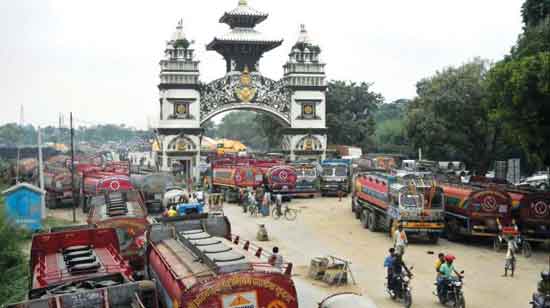KATHMANDU, Dec 27 (NNN-XINHUA) – As the threat of the Omicron variant of COVID-19 looms large, Nepal still has a long way to go, to vaccinate its targeted population.
Even though the country has been receiving a steady supply of vaccines in recent months, it is now struggling to store them and inoculate more of the population, due to the lack of adequate storage capacity and necessary human resources, officials said.
As of yesterday, 32.9 percent of Nepal’s estimated 30-million population has been fully vaccinated, while 50.2 percent of the 19.92-million population aged 18 and above has been fully inoculated, according to the Ministry of Health and Population.
“The level of vaccination is still low amid the Omicron threat,” Sher Bahadur Pun, chief medical officer at the Kathmandu-based Sukraraj Tropical and Infectious Disease Hospital, told Xinhua.
“I found that some older people have not been vaccinated for being unwilling to queue. Some people are still not aware of the importance of vaccines against the pandemic,” he said.
Nepali health officials acknowledged that the vaccination rate is still low and they are trying to increase the coverage.
“The World Health Organisation advised us to increase the portion of fully vaccinated to 40 percent by Dec, and we are reaching close to that level,” said Bibek Kumar Lal, director of the Family Welfare Division, at the Department of Health Services. “We also rolled out a campaign for people aged 12-17, after first vaccinating people aged 18 and above.”
Nepal has so far identified three Omicron cases. Despite the potential threat, Nepal cannot double or triple the vaccination rate anytime soon, officials said.
“We have been vaccinating around 250,000 people on a daily basis. Sometimes we inoculated as many as 350,000 people in recent days,” said Sagar Dahal, chief of the National Immunisation Programme, under the health ministry. “In the past, we vaccinated a maximum of 300,000 people in a day.”
The government is making efforts to expand the vaccination drive started in late Jan, he said.
“But we’re facing difficulty in expanding the vaccination drive, due to the lack of trained human resources and logistics,” he said, adding that, it also takes time to raise public awareness and create momentum for the drive.
“Due to the delayed supply of syringes, the vaccination campaigns were affected in some districts,” said Lal. “On Thursday, we received a supply of five million syringes, which will be enough for us to run a vaccination drive for a few weeks. An additional 60 million are also in the pipeline.”
By yesterday, the COVID-19 pandemic has sickened a total of 827,271 people and left 11,585 others dead in Nepal.– NNN-XINHUA





